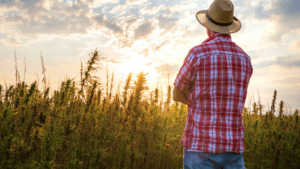
CBD Benefits for Liver Function
Cannabidiol (CBD), extracted from Cannabis Sativa, has been well-researched for its many benefits and is quickly becoming a favorable therapeutic option as adverse effects are limited, it does not cause

Cannabidiol (CBD), extracted from Cannabis Sativa, has been well-researched for its many benefits and is quickly becoming a favorable therapeutic option as adverse effects are limited, it does not cause

Data from two public surveys came out this year to see how Americans currently perceive specific stigmas often associated with cannabis use. Three questions in particular that were addressed were:

Not only can being mindful with your skincare routine provide direct nutrients and benefits to your skin, but routines of self care may also benefit our mental wellbeing. Despite the

“Hemp is of first necessity to the wealth and protection of the country.” Thomas Jefferson The Agriculture Improvement Act of 2018, also known as the Farm Bill, excluded hemp

June is Men’s Health Month. A time for acknowledging that men’s health issues are often overlooked and encouraging society to destigmatize men seeking help for mental health conditions. Although

With the arrival of summer, it’s time to embrace the sun, warmth, and a renewed sense of adventure. Whether you’re planning beach days, hiking trips, or simply looking to enhance

Cannabidiol (CBD) has been researched for its benefits across multiple conditions. Some may choose to take it for general wellness while others depend on it for the ability to live

A lack of motivation can happen to anyone, in fact most people will experience it in one way or another in their lifetime. While a lack of motivation may be

Mental Health Awareness Month is recognized throughout the month of May. As the National Alliance on Mental Illness (NAMI) states, “It’s an opportunity for all of us to come together

In 2022 Colorado gathered experts across the state to convene in a task force to study intoxicating hemp products and make legislative and rule recommendations. The task force, of which
Open the following in new tabs if you:
If you are already a user: Client Login
If you are not, then register: Client Registration
Once Logged in, click below to refresh the page.